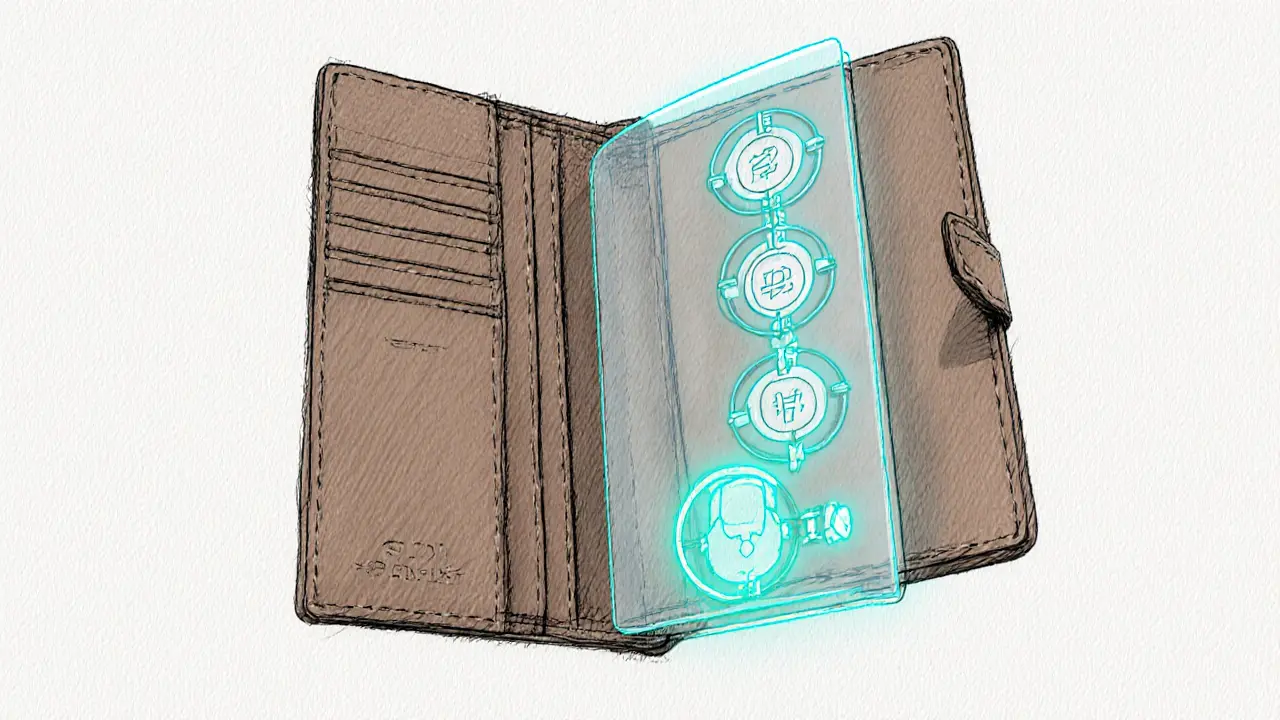Merkle Tree Security Properties Explorer
Generated Merkle Tree Structure
When you hear the term Merkle tree is a cryptographic data structure that builds a single hash from many data blocks, allowing anyone to verify the integrity of a huge dataset with just a tiny piece of information, you might wonder why it matters for security. The answer is simple: the whole point of a Merkle tree is to give you a tamper‑evident fingerprint that’s cheap to compute, cheap to store, and hard for an attacker to forge. In the next few minutes we’ll walk through the core security guarantees, real‑world blockchain uses, and the challenges that lie ahead.
Quick Takeaways
- Merkle trees turn thousands of hashes into one Merkle root, a single 256‑bit value that represents the entire dataset.
- Any change to a leaf node instantly produces a different root, making tampering obvious.
- Membership proofs let you confirm that a piece of data is inside the tree without revealing the rest of the data.
- Combining Merkle trees with zero‑knowledge proofs enables privacy‑preserving verification.
- Quantum‑resistant hash functions are the next frontier to keep Merkle‑based systems safe.
How Integrity Is Guaranteed
The security backbone of a Merkle tree is the cryptographic hash function (a mathematical algorithm that maps any input to a fixed‑size, seemingly random output). Popular choices like SHA‑256 produce a 64‑character (256‑bit) string that behaves like an electronic fingerprint. When a leaf node is hashed, the result is paired with its sibling, hashed again, and so on until the single Merkle root emerges.
Two essential properties make this work:
- Collision resistance - finding two different inputs that yield the same hash is computationally infeasible.
- Pre‑image resistance - given a hash, it’s practically impossible to reverse‑engineer the original input.
Because each non‑leaf node is just the hash of its children, a single altered leaf propagates up the tree and flips the root. Verifiers simply recompute the root from the supplied proof and compare it to the trusted value. If they differ, the data has been tampered with.
Membership Proofs: Proving Presence Without Revealing Everything
One of the most useful security features is the ability to generate a membership proof (sometimes called a Merkle proof). The proof consists of the sibling hashes along the path from the target leaf to the root. With just these few hashes, anyone can reconstruct the root and verify that the leaf was part of the original dataset.
Why does this matter?
- Access control: A server can prove that a user’s public key is on an allow‑list without sending the entire list, limiting exposure.
- Database queries: Large distributed databases can confirm that a record exists (or does not) without streaming the full table.
- Blockchain light clients: Mobile wallets download only block headers (which contain the Merkle root) and request proofs for specific transactions, saving bandwidth.
Zero‑Knowledge Proofs Meet Merkle Trees
When privacy is paramount, a Merkle tree can become the backbone of a zero‑knowledge proof (ZKP). In a ZKP, a prover convinces a verifier that they know a secret without revealing the secret itself. By committing to data with a Merkle root, the prover can later reveal only the minimal subset of hashes needed for the proof, while the verifier checks consistency against the root.
Real‑world systems like zk‑SNARKs for privacy‑focused cryptocurrencies (e.g., Zcash) use Merkle trees to record shielded addresses. The verifier checks that a spent note belongs to the tree without learning which note it was, preserving user anonymity while still enforcing double‑spend rules.
Blockchain in Action: Bitcoin, Solana, and Beyond
Bitcoin’s block header contains a Merkle root that summarizes all transactions in the block. Light clients request Merkle proofs for the transactions they care about, which means a node can validate a payment without downloading the entire blockchain-a massive storage and bandwidth win.
Solana pushes the idea further with concurrent Merkle trees. By caching a “canopy” of upper‑level hashes, Solana reduces the amount of data needed for proof verification, cutting NFT minting costs from millions of SOL to a few hundred. The canopy depth is a tunable security parameter: deeper canopies improve proof speed but require more on‑chain storage.

Performance and Resource Trade‑offs
The verification cost of a Merkle proof grows logarithmically with the number of leaves. Whether you have 1,000 items or a billion, the proof size stays roughly O(log₂N). That’s why Merkle trees scale so well for massive datasets.
However, building the tree (especially with deep canopies) can be expensive. Developers often use libraries like @solana/spl-account-compression to estimate the required account size and rent‑exempt balance before deployment. The key is to balance three factors:
- Security depth: More levels increase resistance to targeted attacks but consume more storage.
- Verification speed: Shallower trees produce shorter proofs, speeding up client verification.
- Cost: On public chains, each additional byte translates to higher transaction fees.
Quantum Threats and Post‑Quantum Mitigations
All of the security guarantees we’ve discussed hinge on the strength of the underlying hash function. Quantum computers could, in theory, speed up collision searches using Grover’s algorithm, effectively halving the security bits of a hash.
The emerging solution is quantum‑resistant hash functions such as SHA‑3 variants, BLAKE3, or newer constructions designed for post‑quantum security. Projects like the NIST PQC competition are already standardizing these algorithms, and some blockchain prototypes are swapping in SHA‑256‑256‑q for their Merkle trees to future‑proof against quantum attacks.
Practical Checklist for Secure Merkle Tree Deployment
| Aspect | What to Verify | Typical Tool/Library |
|---|---|---|
| Hash Function | Use collision‑resistant, preferably post‑quantum, hash (e.g., SHA‑3‑256) | OpenSSL, libsodium |
| Tree Depth | Set depth based on max dataset size; calculate 2^depth >= expected leaves | Solana SPL‑account‑compression |
| Proof Size | Ensure proof fits within network packet limits (typically < 1KB) | Merkle‑tree npm package |
| Zero‑Knowledge Integration | Combine Merkle root commitment with ZKP protocol (e.g., zk‑SNARK) | circom, bellman‑groth16 |
| Quantum Readiness | Plan migration path to quantum‑resistant hash within 2‑3 years | Post‑Quantum Crypto library |
Running through this list before launch helps you avoid common pitfalls such as using an outdated hash or under‑estimating tree depth, both of which could compromise the Merkle tree security guarantees.
Common Misconceptions and Limitations
It’s easy to think a Merkle tree hides data completely. In reality, the tree structure can leak metadata: the height of the tree reveals the total number of leaves, and the pattern of sibling hashes can hint at data relationships. To mitigate this, some designs add random padding or employ blinding factors.
Another myth is that Merkle trees are “unbreakable”. Their security is only as strong as the hash algorithm underneath. When a hash function is deprecated (think MD5), every system that builds Merkle trees on it becomes vulnerable to collisions.
Future Directions
Beyond blockchain, Merkle trees are finding homes in IoT firmware updates, secure software supply chains, and federated learning. Researchers are experimenting with incremental Merkle trees that allow dynamic inserts without rebuilding the whole structure, and with Merkle‑based vector commitments that support range proofs for privacy‑preserving analytics.
As data volumes keep exploding, the single‑hash fingerprint model offers a scalable way to prove integrity across distributed parties, making Merkle‑based designs a cornerstone of next‑generation security architectures.
Frequently Asked Questions
What is the main security advantage of a Merkle tree?
It provides a tamper‑evident fingerprint (the Merkle root) that changes if any leaf data is altered, allowing fast integrity checks without exposing the full dataset.
How does a membership proof work?
The prover sends the sibling hashes along the path from the target leaf to the root. The verifier hashes them together, reconstructs the root, and compares it to the trusted root value.
Can Merkle trees be used with zero‑knowledge proofs?
Yes. The Merkle root acts as a commitment; a ZKP can then prove knowledge of a leaf or a relation among leaves without revealing the leaves themselves.
What hash functions are recommended for future‑proof security?
Post‑quantum candidates like SHA‑3‑256, BLAKE3, or NIST‑standardized PQC hashes provide stronger resistance against quantum attacks than SHA‑256.
Are there any privacy risks when using Merkle trees?
While the data content stays hidden, the tree’s shape can reveal the number of items or hint at relationships. Adding random padding or blinding factors can mask these side‑channel leaks.

